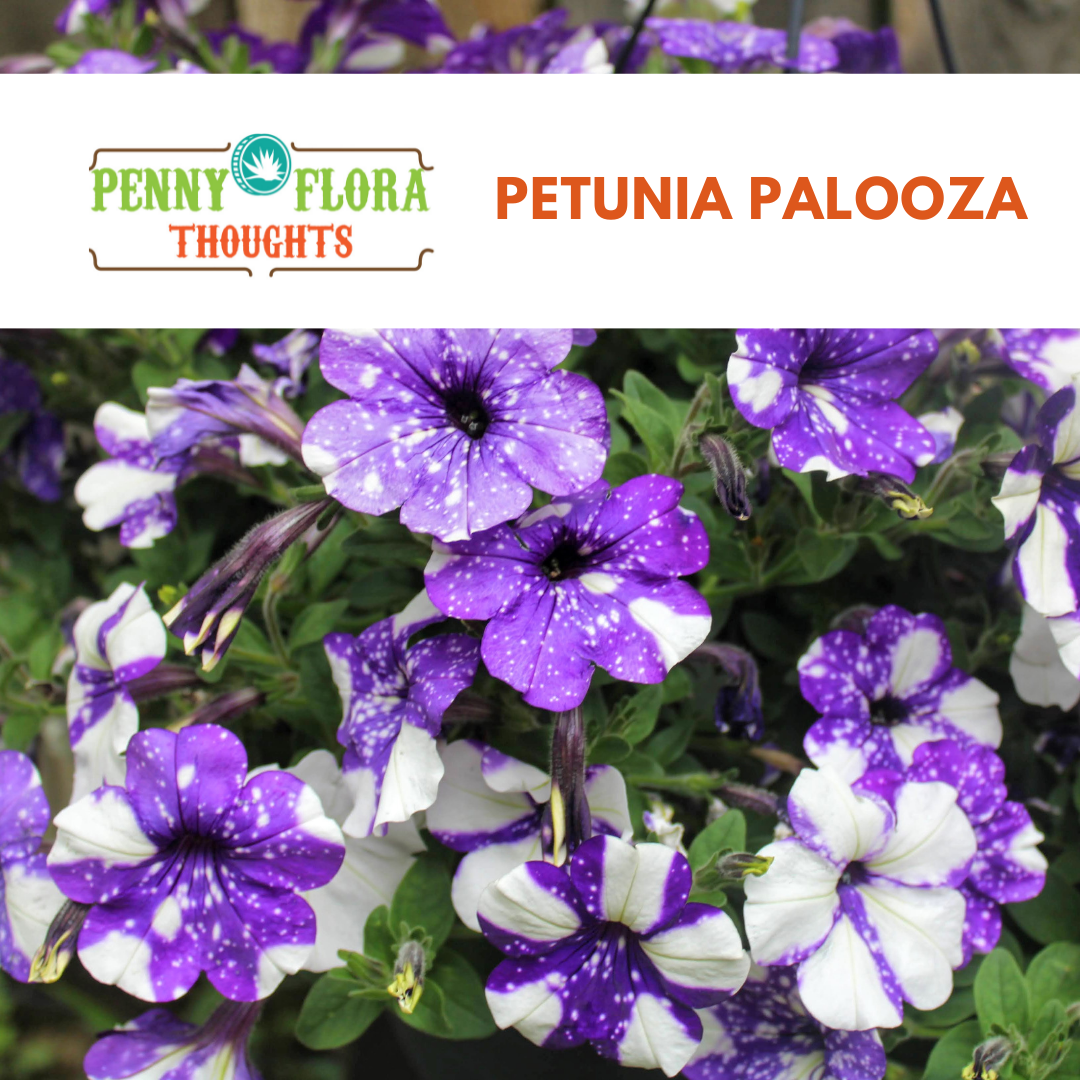No yawning, please. Today’s petunias are now one of the hottest annuals in the plant world! Thanks to recent breeding, there are hundreds of new petunias that are tougher and flexing more colorful than ever. Yes, there’s the classic bubblegum pink varieties but also new colorful updates in black velvet, chartreuse lime, cheery yellow, sunset orange plus amazing multi-colors. They’re speckled, striped, starred and even edged in contrasting colors. Petals can be doubled, ruffled, fringed, giant or petite. Some are mounded perfectly for flower beds while others are trailing for containers. With such an incredible assortment, there is a petunia (or two or three) to score for every garden situation.

History
Petunias are native to South America and part of the same plant family as tomatoes, peppers, potatoes and tobacco. They were discovered by Spanish explorers in the early sixteenth century then later hybridized in Europe in the early 19th century. Thompson & Morgan, a long-time British seed company, retells the plant’s fascinating history and explains that “petuns,” as the natives called them, were originally deemed a “worthless tobacco plant” by early Spanish explorers. In fact, they chose not to send back samples to Spain. Three hundred years later, French explorers returned home from Argentina with samples which led to more explorers’ collecting petunias and initial crossings of the samples in England, Germany, America and Japan.
Variety
Looking for edging, a ground cover, colorful updates for a tired perennial border or a trailing plant for a hanging basket? You can find a petunia to suit you. Petunia hybrids are divided into the following categories, based on their flower size and growth habit.

- Grandiflora are the most popular type with the largest flowers (3 to 5”). Some varieties cascade, making them ideal for hanging baskets or window boxes. Series include Dreams, Trumpet, Cascade and Aladdin.
- Multiflora have smaller flowers (2”). The plants look best when massed together in a landscape bed. Series include Carpet, Celebrity and Pearls.
- Millifloras form tight, shrublike mounds no more than a foot high, with 1-inch blooms. They are used as edging or mixed with other annuals in containers. Series include Fantasy and the newly introduced Tiny Tunias.
- Trailing or ground cover grow quickly over a large area, spill over walls or trail from hanging baskets. Series include Avalanche and Wave.
- Calibrachoas were once part of the petunia genus then later named to a separate one. While referred to as “million bells” or “mini petunias,” they differ from petunias in their drought tolerance and broader range of colors. They’re ideal for containers and were named the 2018 Annual of the Year by the National Garden Bureau. We love the calibrachoa-petunia hybrids in the SuperCal series that offer a long bloom season for hanging baskets.
Care Tips
Petunias are grown as annuals in most of the United States and should only be planted when the soil warms to about 60F degrees and the frost danger has passed. Plant them in full sun and well-drained soil. Larger flowered ones like Grandifloras need extra care, since they do not perform well in extreme heat, humidity and rain. Try planting them in a location with afternoon shade, and if planted in containers, move them under shelter during heavy rainstorms. A fertilizer is super important for petunias since they’re such fast growers and prolific bloomers. Add a balanced fertilizer to those in the ground. For containers, apply a liquid fertilizer (follow the fertilizer label; typically 1/2 teaspoon per gallon) every week. Water plants in the ground weekly or more frequently during high heat and drought periods. Water hanging baskets weekly in May then amp up watering daily in the hot summer months. Morning time is best, and remember to thoroughly soak soil at the base of the plants. Also, avoid overhead watering that beats down the flowers. For more details, check out Jared’s “How to Correctly Water a Hanging Basket” video.



2 comments
Hi! Do you have that purple petunia in stock in that 1st picture??( Mitraee,Starry Sky it has several nes.i guess)
Thanks!!
I am amazed at your goregous flowers
and your beautiful ranch.Hoping to drive , from Akron, sometime this Spring or Summer.